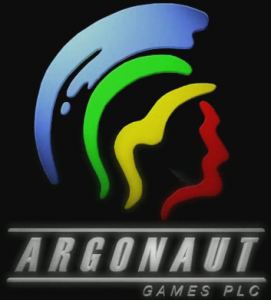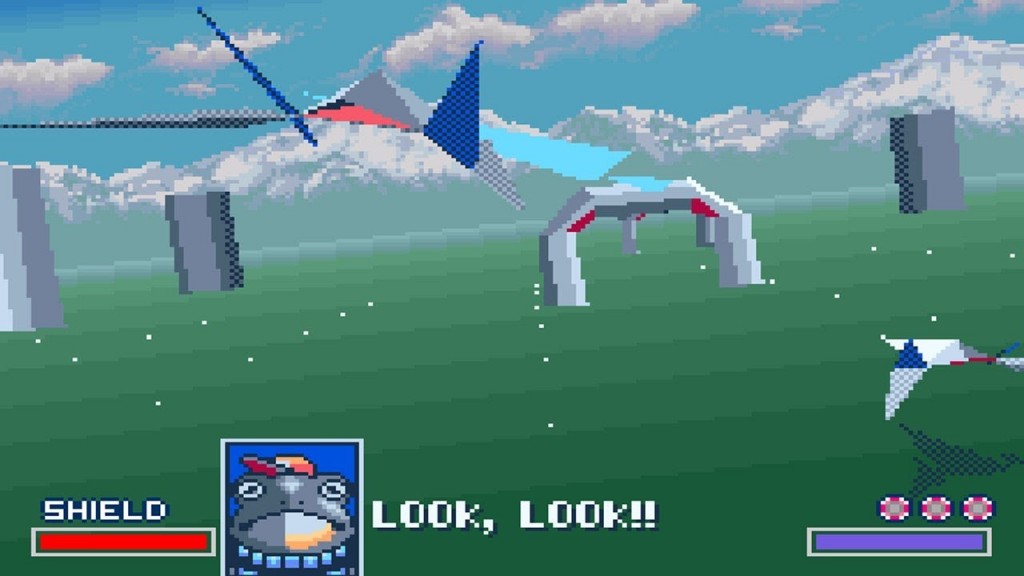Most in the gaming enthusiast community know of Star Fox; a fan favourite among the Nintendo faithful and other gamers alike. What many do not know is what lead to the circumstances of its creation, and how it all started with an independent British games developer called Argonaut Games. Argonaut was founded in 1982 by a sixteen year old Jez San. This young developer had gained a keen interest in computing at an early age and had taught himself the Assembly language by the age of thirteen. He started developing his first game, Skyline Attack for the Commodore 64 in 1984 and he also became a Wizard (Admin) for Essex MUD, which is reported to be the world’s first MMO.
In 1986, the company finally started to become profitable and gained the ability to hire other staff in 1986, following the release of Starglider; a title recognised as one of the earliest break-out 3D games.
Argonaut Games managed to successfully design 3D models for the NES and the Gameboy, becoming the first developers to do so. This feat attracted the attention of Nintendo, who then signed a deal with Argonaut Games to acquire their services. What they had done to pique the interest of Nintendo, Jez said “They had the Nintendo logo drop down from the top of the screen, and when it hit the middle the boot loader would check to see if it was in the right place.” Nintendo had engineered their games in such a way that they would only boot if “Nintendo” dropped down to the correct place on the screen. Argonaut had modified this so that they could drop down any word, but with a resistor and a capacitor installed. This meant that Argonaut could make the game think that it had read the text and successfully boot, essentially circumventing Nintendo’s copyright protection.
It is at this point that NesGlider comes in. Jez and Argonaut games had a working prototype of the game running on the NES console. NesGlider was merely a placeholder name and it came about due to the fact the game was similar to their StarGlider game and was being developed for the NES console. Argonaut Games also developed a prototype of the game for the new Nintendo hardware the SNES.
The game did really look quite rough as can be seen in the gameplay demo that can be seen online (and leaked thanks to Hidden Palace, here’s a backup copy), it seemed very slow and the graphics were shaky. This was because the SNES console was not primarily built with 3D games in mind. NesGlider on the SNES looked like it was not as good as the previous StarGlider game which used quick movements and looked a lot smoother. This is why Jez told Nintendo “This is as good as it’s going to get unless they let us design some hardware to make the SNES better at 3D.”
Nintendo whole-heartedly agreed with Jez and invested one million pounds for the new hardware to be developed. It was called the Super FX chip which was comically codenamed “MARIO” (Mathematical, Argonaut, Rotation & Input/Output) the chip would render 3D polygons that would assist the SNES in rendering 2D effects. The chip would actually be placed on the games cartridge and this allowed the SNES to finally utilize 3D graphics that may look archaic by today’s standards but were groundbreaking for a console at this time.
Argonaut then gave the prototype NesGlider to Nintendo to allow them to work on it, this was a completely collaborative effort as developers from both companies worked on the game. Shigeru Miyamoto from Nintendo was made the producer for the game and he picked his own developers, artists and other people from Nintendo so that NesGlider could become a more “Nintendo” type game.
This is where the prototype did a complete “Barrel Roll”, Miyamoto wanted to give NesGlider a more arcadey feel and wanted there to be more action. This is where the collaboration came in and Argonaut games gave Nintendo the idea that the player would be in a spaceship and fly to other planets instead of the way that the prototype played, which in gameplay seemed to be on Earth fighting tanks and walkers. Miyamoto also did not want the game to be considered boring and so decided that all the main characters would be animals and the reason that he chose a fox was that it was a prominent feature at a nearby shrine.
NesGlider is not a cancelled game but is purely a super early prototype for the highly regarded StarFox. If it was not for Argonaut Games and Jez San this hugely popular franchise would have not come into existence. This kind of collaboration between Nintendo and Argonaut was the main reason for the success this title deserved and with a bit of give and take between developers and publishers amazing games can be created.
Argonaut did also go on to start development on StarFox 2 for the SNES, this was ultimately cancelled though due to the imminent release of the N64. Unfortunately in October 2004 Argonaut had to lay off 100 employees and was put up for sale, this was reported to be because of a lack of deals with publishers which had led to cash flow problems. Then in 2005 the company was put into liquidation and finally dissolved in 2006.
Thanks to Celine for the contribution!
What do you think about this unseen game? Give your vote!
Would you like to add more info, screens or videos to this page? Add a comment below!
- Frontier (Origin Systems) [PC – Cancelled Pitch] - 14-03-2016
- Silent Hill: Cold Heart [Wii – Cancelled Pitch] - 23-02-2016
- Space Race [Cancelled Pitch – MegaDrive / Genesis] - 01-02-2016





Edge #278 has ‘The Collected works:Dylan Cuthbert’ big feature, Nes 3D demo briefly mentioned.
Maybe one day we’ll be able to see their 3D demo too, it would be nice, Argonaut were one of the most talented teams ever :)
I’d say their output was as mixed as anyone elses to be fair.
Loved Starglider 1+2, Alien Res.etc, but things like:Birds Of Prey/Hawk, Days Of Thunder, Creature Shock, Red Dog (which they hyped so badly) fell way, way short of the greatness expected.
Edge Magazine, Issue 7/April 1994.An Audience with Jez San (P92-P94 if your after the scans):
jez talked early on in interview about showing Nintendo the prototype of Nes Starglider/NesGlider and how Argonaut were then given an early prototype SNES and ported NesGlider to it within a week.
Nintendo decided game was too ‘cult’ and would’nt have mass-market appeal, so they worked closely with Nintendo and were taught how to write a mass-market game by Nintendo, whilst they themselves did all the design work etc on the chip.
As always, thanks a lot for adding all these info to the site as comments Ross, i’m happy that even if it’s not possible to edit the pages as a Wiki, people can still update the info by adding their comments :)
I’ve also kept the pages from C+VG years ago where Jez is interviewed by Gary Whitta, about the SFX Chip (Feature:First Flight-This Man Has Changed The Face Of Super Nes Gaming Forever).
Jez comments how he/Argonaut had always wanted to move into the hardware side of things and were thinking about doing a 3D chip for the NEs and the Commodore Amiga, but Nintendo steered them towards the SNES as the SNES was just coming out.
Would of been interesting indeed to see what might of happened IF the SFX chip had ended up in Amiga hardware in place of Nintendo Hardware.
CD32 had it’s own Starfox clone, Guardian by Acid Software, originally called Sibwing, as coder Mark Sibly was a massive fan of Starwing :-).
One for the Alt.History books, if ever there was….
Take it people are aware that (SNES) Starfox was originally planned as a ‘go anywhere’ game?.
According to Jez San (August 2000) when the 1st batch of playtesters sat down with Starfox, they found the ‘On-Rails’ system much more inuitive, so Argonaut restricted the ships movement to open up the 3D market to the mainstream’ as Jez put it.
Some credit should go to Argonaut’s Tim Watson, whilst at the company he wrote the early 3D routines that became the basis of Starglider II.
Argonaut just get improving them for later games, yet i never see him credited for his pioneering work. ..
Another bit of unknown triva on Argonaut’s 3D routines:
Jez San
Some people have asked if there is any VR running on Amigas.
It is interesting to note that W Industries use Amiga computers to
drive their 3d displays in Virtuality. Nowadays they use 34020
graphics boards inside the Amiga, but years ago they wanted to
license our 3d graphics system that runs on native Amigas as used on
StarGlider-2 the 3d space game (circa 1987/8). That is perhaps the
first decent VR game with polygon graphics that we now all take for
granted, but in its day was one of the first. Using the 3d graphics
techniques we developed back then, and a fast Amiga computer, we can
have display rates and scenery similar to what VPL show on very
expensive Silicon Graphics computers. For a fraction of the price.
— Jez.
We are seriously thinking about making a StarGlider sequel at this
very moment.
— Jez.
June 1995
Nice to get a comment from someone else involved :
Posted Today, 6:30 PM
Talking of Star Fox, Dylan Cuthbert of Argonaut :
“I’m just saddened really by the lack of effort THE MOST RESPECTED software company (Argonaut) is spending in making its games for the 3DO. Imagine what Starfox could have been like if it had had the 3DO’s hardware and colours/sound etc… it probably had about the same time period spent on it (if not less staff and a lower budget! ; I was one of the staff, I know how little I was paid)”.
Just sent you the SNES Article where Jez San gives a VERY DIFFERENT account of how the SFX chip was born.
Claiming Argonaut had a Prototype SNES, converted Battlezone to it in a week, adding speech, Nintendo not being that impressed so Argonaut look at SNES DSP but it’s too limited for 3D so they start work on SFX Chip.
Caught Jez out numerous times now doing a rewrite of history
The magazine where Jez talks of doing an updated Battlezone demo to show Nintendo.
https://archive.org/details/nintendo-game-zone-06